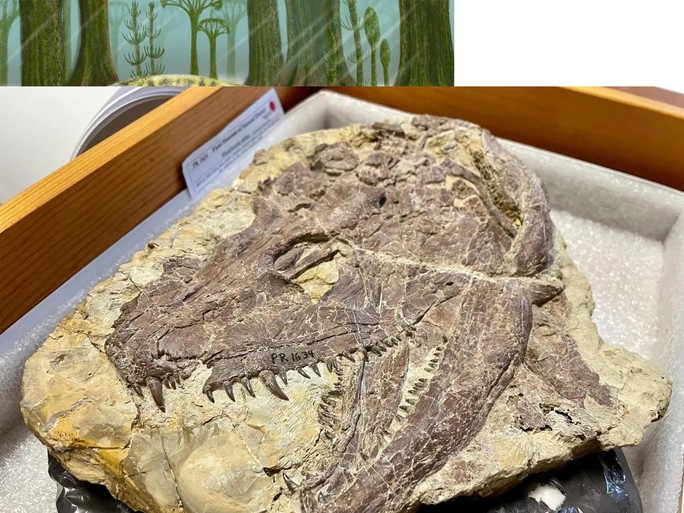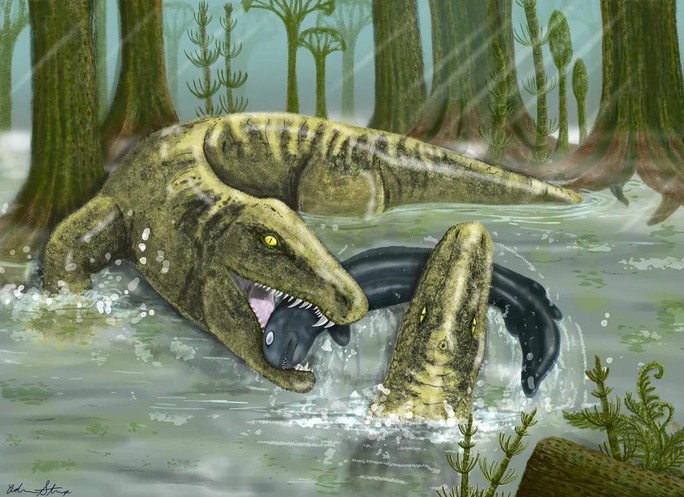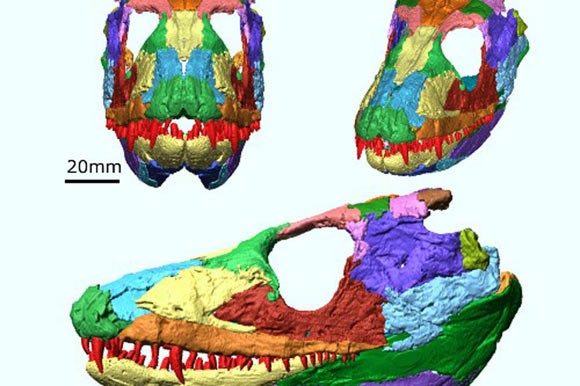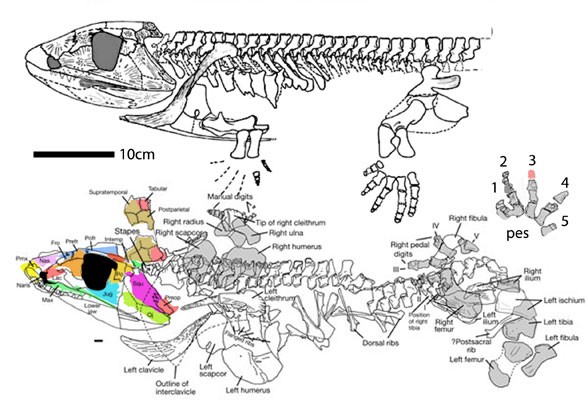New analysis of the Whatcheeria beast with many remains that once appeared on US soil has led paleontologists to call it a “superhuman predator”.
Research just published in the scientific journal Communications Biology, conducted by the University of Chicago (a research university in Illinois) and the Field Museum (USA) has “upgraded” the danger of humans.beastThis curious whatcheeria.
Whatcheeria is most famous for its terrifying skull fossil unearthed from Iowa, which is found to be 340 million years old, which is from the Carboniferous period. After the Carboniferous period was the Second Diep and then the Triassic (primitive dinosaurs appeared at the end of this period), Jurassic and Cretaceous (the golden age of the T-rex tyrannosaurs).

The monster skull was unearthed in Iowa – Photo: FIELD MUSEUM
Thus, this dinosaur-like creature is much older than the T-rex, but like the T-rex, is the lord of the ancient beast world.
It’s smaller than the T-rex with its almost alligator-like build and can fit in a bathtub if rolled up, but new research points to one thing that makes it all the more dangerous: The rapid growth when it was still young. young.
Unlike modern reptiles that mature slowly and steadily, ancient Whatcheerias rapidly reached “beastly” levels in the early stages of life, according to Dr. Ben Otoo, co-author of the study. .

Graphic depicting the “portrait” of our Carboniferous beast ancestor and other tetrapods – Photo: FIELD MUSEUM
The new study also exposes bony grooves in the skull, which house the same sensory organs as fish and amphibians, suggesting it lived in water. The sturdy leg bones help it to crouch and easily wait for prey to swim past.
“It probably spent a lot of time near the bottoms of rivers and lakes, going out and eating whatever it liked. You could certainly call this the T-rex of that era,” according to SciTech Daily . Dr. Otoo.
Although Whatcheeria looks like giant salamanders, it is completely unrelated to this group, but is part of a lineage that eventually evolved into the four-limbed animals we are today.

Dr Ken Angielczyk, co-curator of the Field Museum and co-author of the study, concludes: “That means it can help us learn about how tetrapods – including them I – evolved”.









